Dear Artist,
One foggy morning, I was painting on the edge of the Seine within a few miles of Monet’s home in Giverny. In the distance and coming upstream toward me was what looked like an American birch-bark canoe. Barely able to make out the unlikely apparition in the mist, I figured the canoe to be haphazardly made, and its occupants to be two teenage boys. Sure enough, as the canoe came alongside, it was a patched-up mishmash paddled by a couple of kids who had probably overindulged on The Last of the Mohicans.
It didn’t hurt that I knew a wonderful story about Jean-Marie Toulgouat. Born in Giverny in 1927, the year after Claude Monet died, Toulgouat, as a boy, had taken painting lessons from Blanche Hoschede Monet, one of Claude Monet’s adopted daughters. Sometime near the beginning of the Second World War, Jean-Marie and a school-friend built an American Indian-style canoe. The story goes that they soon ran out of proper boat-building materials.
“Blanche provided the answer to the boys’ problem,” reported the London Daily Telegraph on the occasion of Jean-Marie’s death in 2006. “In old age, Claude Monet had been in the habit of having his gardener burn those of his pictures which he had come to consider not good enough. Blanche had tried to impede this by instructing the gardener covertly to store the condemned paintings in the garage. She now told Jean-Marie that he could finish off the bow and stern of the canoe with pieces of these canvases. Thus Jean-Marie and his friend paddled the Seine in a boat partly constructed from the works of Claude Monet.”
Toulgouat grew up to become a popular painter. But his greatest legacy was his restoration of Monet’s home and garden in Giverny. The property, which was almost derelict by 1970, is now a National Historic Site. More than a million visitors pass through the studio, home and garden every year. On Mondays you can paint on the premises. If you get a chance, please drop me a note. I’m curious if others have experienced a deja vu while painting.
Just in case you’re wondering, Toulgouat’s canoe was later reported to have been burned.
Best regards,
Robert
PS: “Lots of people will protest that it’s quite unreal and that I’m out of my mind, but that’s just too bad.” (Claude Monet)
Esoterica: I’ve had several of my best deja vu in France, particularly in Brittany and Normandy where my deGennes Huguenot ancestors came from. Maybe the phenomenon has something to do with the nature of painting itself. Whether we like it or not, every work of art is a reworking of something else, of something that happened before. Even the wildest abstractionist on the very cutting edge knows in her heart that a gesture, a stroke or combinations of colour or line have somehow been done before and are merely coming around again. “We go forward,” said Marshall McLuhan, “looking in the rearview mirror.”
This letter was originally published as “Deja vu” on November 27, 2012.
The Letters: Vol. 1 and 2, narrated by Dave Genn, are available for download on Amazon, here. Proceeds of sales contribute to the production of The Painter’s Keys.
“Everyone discusses my art and pretends to understand, as if it were necessary to understand, when it is simply necessary to love.” (Claude Monet)
Featured Workshop
This workshop/retreat will be ideal for artists who are serious about improving their painting skills, but who also enjoy great food, terrific accommodations and a bit of adventure. The instructor has many years of experience in both teaching and painting and is dedicated to passing along her knowledge to those who are eager to learn. Small class size will insure individual attention. We will be working from life and previous experience mixing color will be necessary.
Casa Buena Art Retreat, between Puerto Vallarta and Mazatlan, is a calm and beautiful place to relax and explore your creative energy. Please check out their website for photos and detailed information about this exciting opportunity http://www.casabuenaartretreat.com/Retreat_LauraRobb.htm Non-painting travel companions are welcome too.
For more information on the instructor or to contact her, please visit http://LauraRobb.com
Featured Artist
Capturing the beauty of nature and expressing those impressions in oil paint is a joy. Every hour of the day presents new possibilities and keeps even the same landscape location, same composition, an ongoing and beckoning challenge. For this reason, I love painting series: it is exploration made visual.

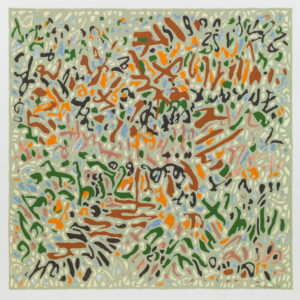
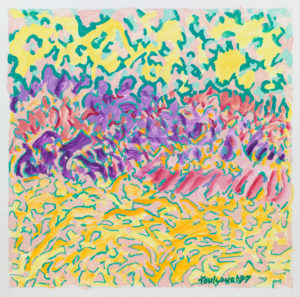
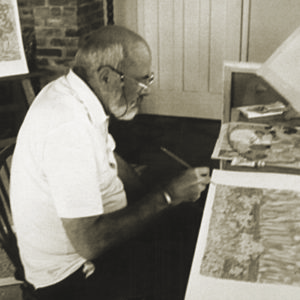
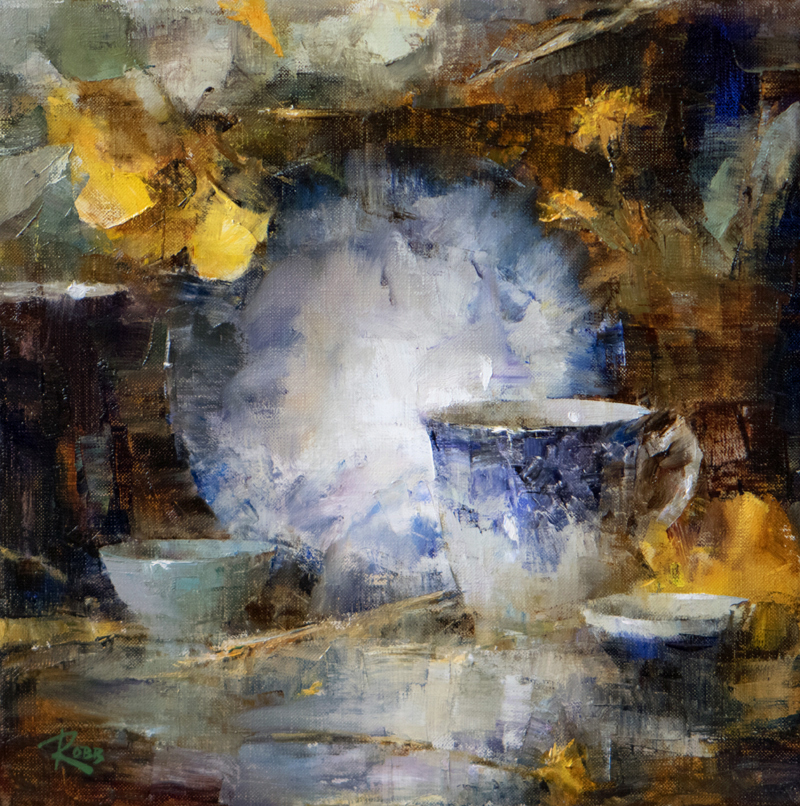
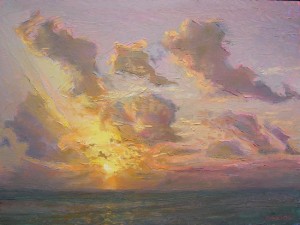



15 Comments
I have had one of these deja vu experiences as well and the quote “Whether we like it or not, every work of art is a reworking of something else, of something that happened before.” was most accurate in this case as the painting sketches were done in the same location 171 years apart. The first by Camille Corot and the second by me on the same hill in Avignon, France. (If you want to read the full story with images of both works it is on my blog and can be found by searching “Artists Camille Corot and Terrill Welch Visit Avignon France 171 Years Apart”)
Climbing up into the gardens to the westerly viewpoint in Avignon early on a June morning is magic and mystery. Across the way there is the Villeneuve lez Avignon with the broken Pont D’ Avignon below falling short of the reach across the Rhone River. The scene is not as easy to compose as I had initially thought. I move here and then there and then back to here and finally set up the easel and paint.
The light is changing quickly but there is still time for my eyes to rest on the scene. They do not. Fluttering across the landscape, with the same sweeping loops as the swallows above, I do not hover or allow my gaze to settle. I search for…. something and maybe nothing at all in the vast countryside – where last evening’s gypsy music and the chiming clink of hands moving to mouths along the narrow streets of the old-city still echoes in the sleeper passages of my consciousness.
Days pass as swiftly as spring to summer and we are in Paris walking the halls of the Louvre. I stop. Completely stunned I stare unblinking at – Villeneuve-lez-Avignon. La Tour Phillippe le Bel. 1843 by Camille Corot. The Avignon landscape is unmistakable the same as the one I had just painted even though it was 171 years later.
I had not seen images of this painting by Corot before nor did I know of its existence but I knew at a glance where it was painted and said to self – he must have painted it from up by the church to get that angle. All I wanted to do at that very moment is catch then next train back to Avignon and climb the hill and look for the exact spot that he would have stood to paint as the compositional challenge I had been struggling with was resolved by this placement of artist and easel. This is the beauty of combining studies of painting location with visits to the work of old masters! Our learning as painters never ends as it is picked up and looped through time and place with our brushes.
Thank you Sara for this letter from Robert that has allowed me to revisit this memory for 2014, yet again!
What a wonderful story you wrote. I can’t wait to go to your blog and see the two paintings. Thank you for sharing this!
Your most welcome Diane and I hope you enjoyed the post about the two paintings. :)
Terrill,
I have a wonderful little book that I cherish called A Guide to The Impressionist Landscape: Day Trips from Paris to Sites of Great Nineteenth Century Paintings. It was written by Patty Lurie in 1990 and is available on Amazon. Each page has a famous painting, along with photographs the author took while standing in the same spot from which the artwork was originally painted. If you haven’t seen it, you would love it. Your letter reminded me of this.
How can one study the work of other painters and not be seduced by the elegant line, the luscious scintillating color and the unusual composition that stretches your boundaries. In the studying of art from history we learn to see, to understand and to add onto our skills. Even Degas painted copies at the Louvre right up to the end of his life. Gauguin used Alfonse Mucha’s studio when he was in Paris for an extended visit before returning to the islands. I might add he took a good look at Mucha’s work and I see the influence and change in his work. We all learn from each other and continue the lineage of art. Sometimes in different ways.
On suggestion of an artist I respect I painted copies of works I liked in the style of the different artists I admired. It has taught me process, color palettes and refined composition. Sometimes I paint the same copy but using the colors,palette, of another artist to understand a new way of processing the laying on of the paint and the harmony of colors.
It is said we spend 20 years learning to paint, 20 years painting other peoples work and finally 20 years of painting our own work and I might add using the processes, colors and compositions we have assimilated.
it has been recounted, but not validated, that CM had one of the early cataract surgeries, barbaric as those were, and actually regained his sight, with a bizarre addition. With no inter-ocular lenses to be had in those days, he was given a pair of coke-bottle glasses. With no lenses in his eyes to filter wavelengths out, he was rumored to be able to actually see UV wavelengths, which had a perceptible effect on his later painting style. Has anyone else ever heard of this story?
Claude Monet has become a passion of mine. After reading “A Mad Enchantment” this summer about Monet’s painting the water lilies, I also learned how much trouble he had with his eyes. In sympathy, my own eyes started giving me fits, but the solution came not from surgery or bizarre lenses, but eye drops for dry eye. With winter and some rain, I am improving, but age does not help eyesight!
That said, I never allow anything to obstruct me from drawing or painting at home, in a special studio, or outside. The process became part of me, troubling eyes or not.
MARY,,,,,,,I TOO AM HAVING FITS WITH MY EYES WHEN PAINTING….BEEN AN ARTIST SEVENTY YEARS….COULD YOU POINT ME IN THE RIGHT DIRECTION AS TO DROPS?
This is a great deja vu letter written so poetically once again by Robert Genn. Great because I always learn something totally new. Love the part of the story that tells of young boys using discarded Monet canvases given to then from one of his daughters for the finishing of a canoe they had built.
I was just there in September for the first time. No déjà vue occurred, but i was in complete awe.
The thrill of my art life was to walk through the gardens and their home in October. We also toured many of his earlier locations. A wonderful enlightening experience….he struggled much but certainly had tenacity.
I went to Giverny too. It was a late fall day about 5 tears agi, the last week-end the gardens would be open that year. Even on a cloudy day the colors of the thoughtful plantings glowed. What a treat, and because it was late in the year, it wasn’t crowded. I sat on a bench and worked in my art/travel journal with a small set of watercolors. Maybe not deja vu but a life changing memory to return to. If you are in Paris, hop on the train and take a wonderful self guided sidetrip. Buses meet the train and take you to Giverny.
Imagine being able to start any piece of writing with “One foggy morning, I was painting on the edge of the Seine within a few miles of Monet’s home in Giverny”. This would truly be a dream come true!
This is not a deja vu moment with my painting, but is about a painting.
About twenty-six years ago, I attended an opening of Jane Mayhook’s art at the Stonington Gallery in Anchorage, Alaska. The show was on The Seven Deadly Sins and included works that were powerful and colorful. Although I liked the paintings, they were not paintings that I would buy for my home. I think it was a sold out show.
Later that year, Jane had another show titled Home. Since this was such a different show, I decided to see how she could go from The Seven Deadly Sins to Home. I thought that it would be boring compared to the first show.
I walked into the gallery and saw a simple but huge painting that looked so familiar. Hearts along the bottom as if a picket fence, a little yellow dog in the front yard, bright sun, blue sky, large tree and a pretty little red house made for quite the impact. And it was large.
My youngest son at the age of five had drawn an almost identical picture that I kept in my purse and had named it Home is Where My Heart Lives. This painting had the same title.
I removed my son’s drawing from my purse, and it was as if this painting had been done from my son’s drawing. Several art patrons noticed and made comments as to the similarities. My son had died the previous year on that day. I bought the painting, but then was told that it needed to remain there until the show was over. This was fine with me as I needed to make payments as it was over $2,000.
When I returned to pick up the painting, the gallery staff told me that the artist felt she needed to tell me that this was not just her work. She felt she needed to disclose this since it might affect whether I wanted it. One of her young children had painted on the canvas, but it was decided that it should go into the show anyway due to time constraints. I showed the staff member the drawing that I carried in my purse. She was amazed that the composition and colors were so exact. She instantly knew why I had bought the painting.
So whenever anyone tells me why she likes one painting more than another or that a piece of art is special to her, I know what she is talking about. Maybe to one person a painting is nothing, or even boring or trendy, but to someone else it means everything.
Your story gave me goose pimples! So sorry for the loss of your son, but it sounds to me that he had this planned in advance to give you a message of hope from the other-side. That is a wonderful story, thank you so much for sharing it.